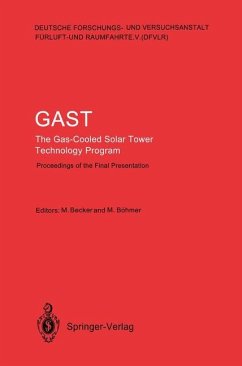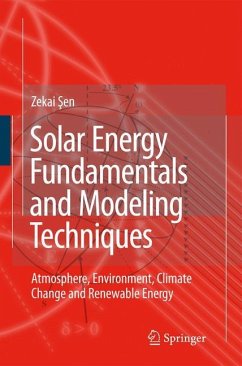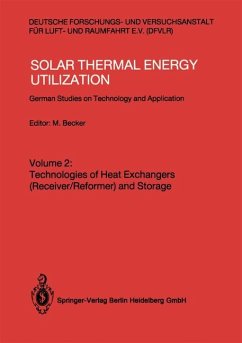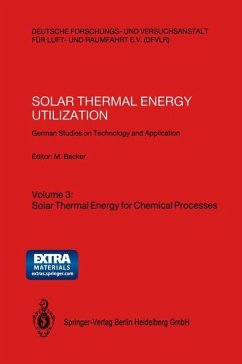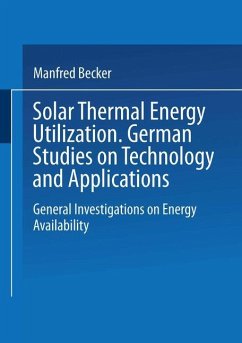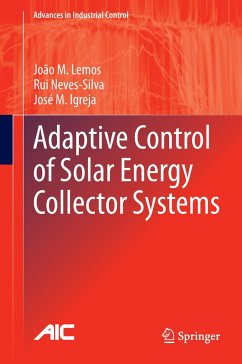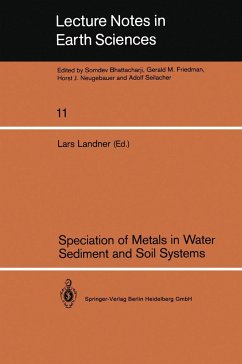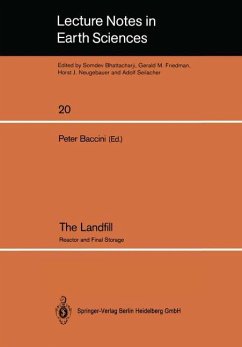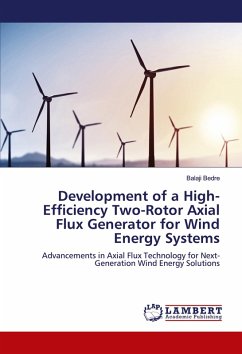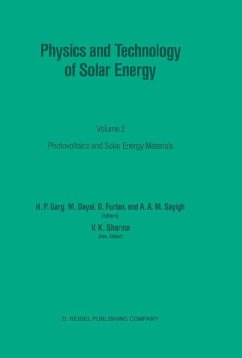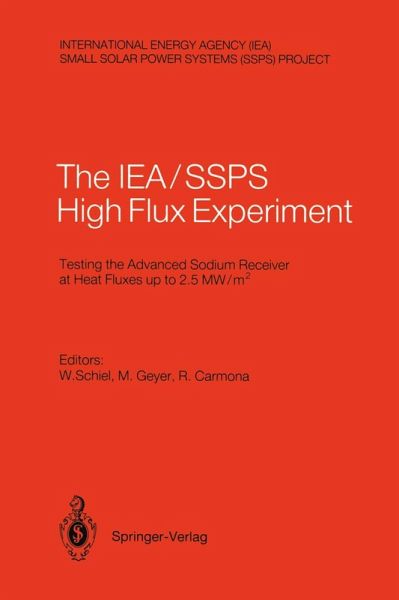
International Energy Agency/Small Solar Power Systems Project: The IEA, SSPS High Flux Experiment
Testing the Advanced Sodium Receiver at Heat Fluxes up to 2.5 MW/m2
Herausgegeben: Schiel, Wolfgang; Geyer, MichaelA.; Carmona, Ricardo
Versandkostenfrei!
Versandfertig in 1-2 Wochen
39,99 €
inkl. MwSt.

PAYBACK Punkte
20 °P sammeln!
Results and conclusions of the IEA-SSPS High Experiment are presented together with the thermodynamic theory of the Advanced Sodium Receiver. During the experiment, flux distributions, surface temperature distributions, efficiencies and losses, were measured and calculated in a power range of 0.8-3.5 MW at different sodium inlet/outlet temperatures. The design heat flux of 1.4 MW/m2 was increased to 2.5 MW/m2 resulting in a slightly increased total receiver efficiency of over 90%.



